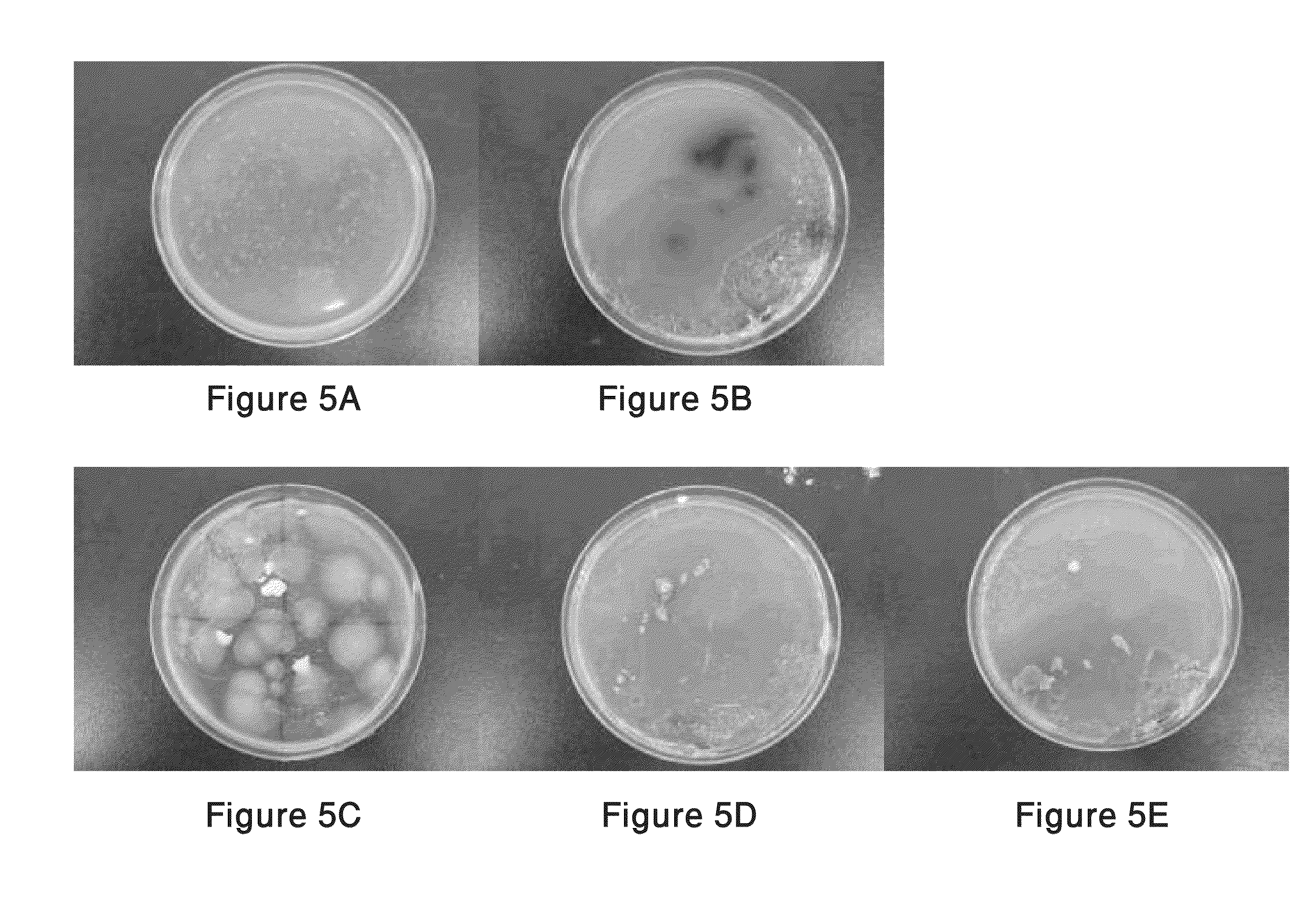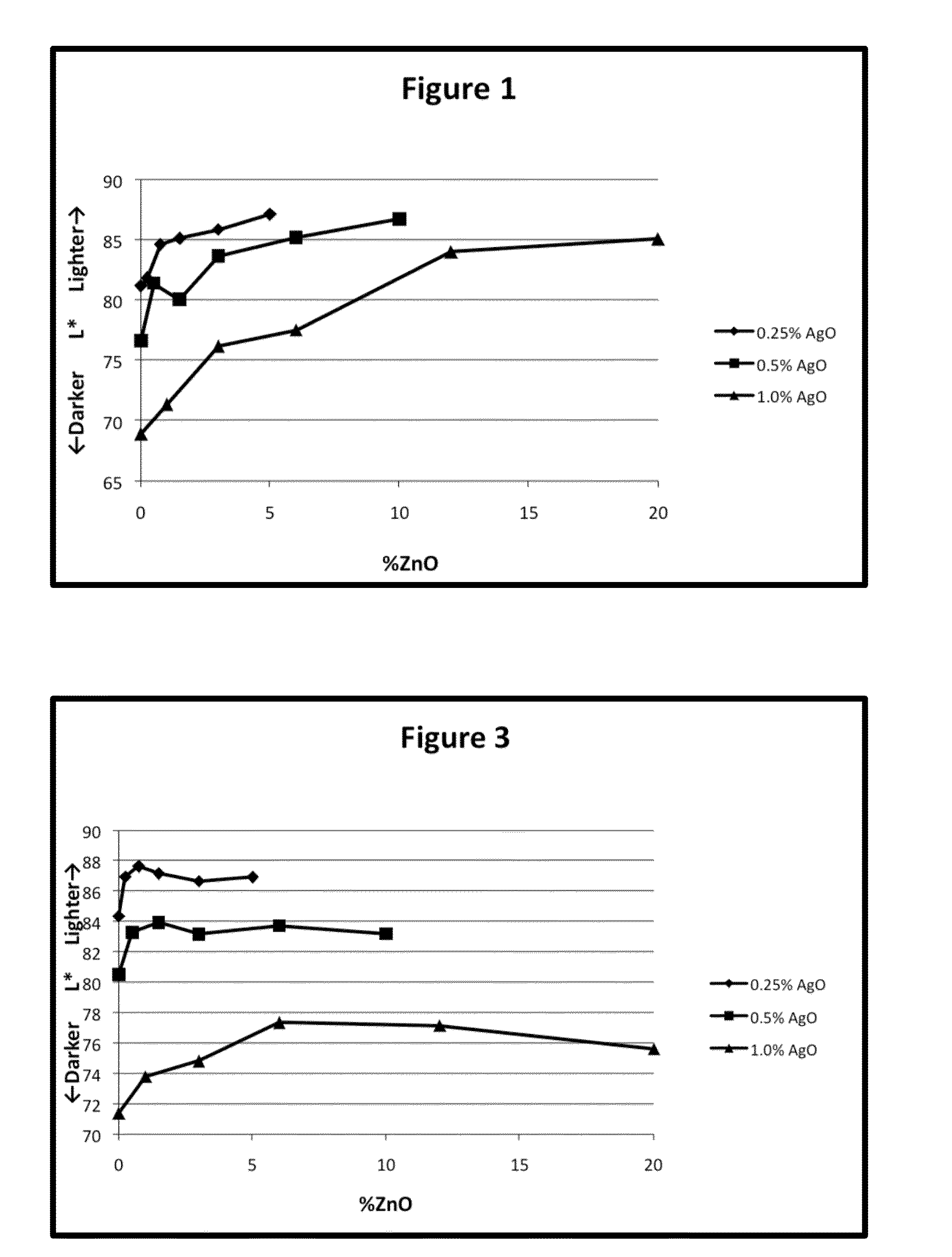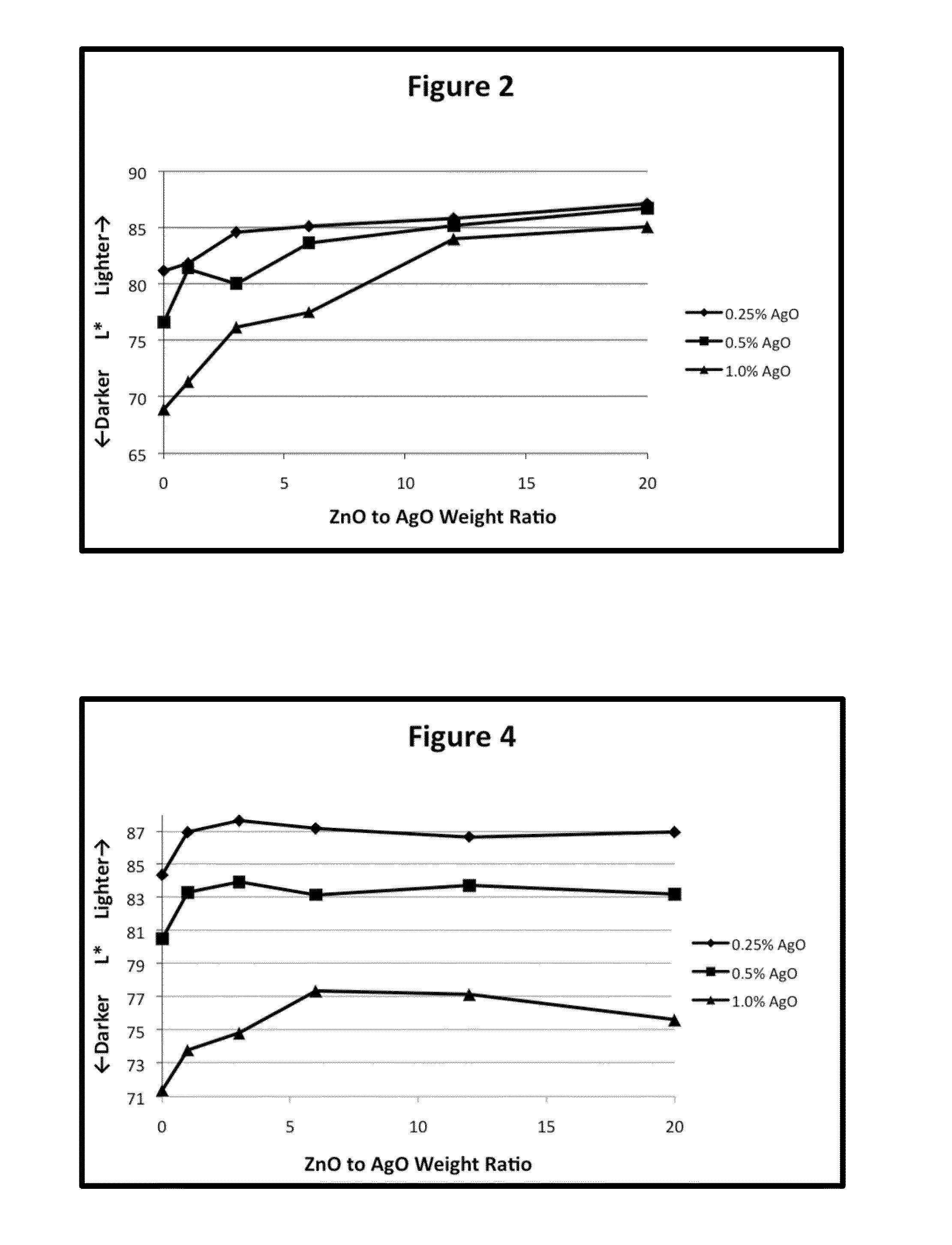Silver Oxide Formulations Having Improved Whiteness Characteristics
a technology of silver oxide and whiteness, applied in the direction of antibacterial agents, drug compositions, biocides, etc., can solve the problems of dark silver oxide particles staining skin and clothing, and it is difficult to hide in white creams used in various cosmetic or pharmaceutical topical applications
- Summary
- Abstract
- Description
- Claims
- Application Information
AI Technical Summary
Benefits of technology
Problems solved by technology
Method used
Image
Examples
example 1
[0090]The exemplary silver oxide-zinc oxide formulations provided hereinbelow were prepared according to the following general procedure: jojoba oil is heated to 80° C. A wax such as beeswax may then be introduced. The material is mixed thoroughly as it is cooled to about 55° C. Palmarosa oil is added, followed by silver (II) oxide and zinc oxide. Mixing may be maintained throughout, and during cooling of the mixture to 35° C.-40° C.
[0091]In these exemplary formulations, the weight ratio of the liquid wax ester to beeswax is about 3.5 to 1. The palmarosa oil content is about 0.07% of the jojoba oil content.
examples 2-13
[0092]Using the general procedure provided in Example 1, various silver oxide-zinc oxide formulations were prepared. Some of the specific formulations are provided below, by way of example, in Table 5. Formulations that have not been provided below produced qualitatively similar results. The percentages of silver oxide and zinc oxide are by weight, based on the total weight of the final product.
[0093]Visual whiteness evaluations were performed on each of the samples, using the scale provided in Table 6.
example 14
[0094]The exemplary silver oxide-zinc oxide formulations provided hereinbelow were prepared according to the following general procedure: to a container containing water is added a viscosity-building agent, typically a smectite (e.g., a bentonite or montmorillonite powder such as Gelwhite H, produced by Southern Clay Products, Inc., Gonzales, Tex.). Other viscosity-building clays, particularly clays in which the silicate layers are disposed in a sandwiched structure, may also be used. Other viscosity-building agents and thickeners may be used, e.g., glycerin and carbomers. Preferably, such selected materials may exhibit good resistance to oxidation or chemical attack by the highly reactive silver(II) oxide.
[0095]The mixture is mixed or homogenized, typically for 0.5 to 2 hours. Silver(II) oxide may be introduced at this stage of the processing. Zinc oxide may be introduced to the mixture, typically along with the silver(II) oxide, or sometime therebefore or thereafter. The oil and / o...
PUM
 Login to View More
Login to View More Abstract
Description
Claims
Application Information
 Login to View More
Login to View More - R&D
- Intellectual Property
- Life Sciences
- Materials
- Tech Scout
- Unparalleled Data Quality
- Higher Quality Content
- 60% Fewer Hallucinations
Browse by: Latest US Patents, China's latest patents, Technical Efficacy Thesaurus, Application Domain, Technology Topic, Popular Technical Reports.
© 2025 PatSnap. All rights reserved.Legal|Privacy policy|Modern Slavery Act Transparency Statement|Sitemap|About US| Contact US: help@patsnap.com



